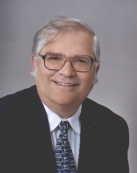Lorentzian Dynamics
Year: 1999 Pages: 17
Keywords: Lorentz
A number of modem physicists have espoused some form of absolute ether theory. But any such theory must explain a number of experiments via dynamic forces in place of the SRT kinematic explanation. This paper attempts to resolve a number of these experimental issues and to provide a coherent explanation of the apparent relativity which results. The specific stimulus for this paper was provided by Sherwin's experiment which attempted to detect directly the Lorentz-Fitzgerald length contraction. However, the Sherwin experiment is generalized herein to thought experiments involving gravitational and electromagnetic interactions. The appropriate force equations are explored for a mass particle in a gravitational orbit and for a charged particle in an electrostatic orbit. For apparent relativity to hold while angular momentum and energy are conserved puts very specific and precise limits on the form of the force equations. Ironically, the electromagnetic Lorentz force does not meet the requirements. Neither does the Ampere force law. Only the Gauss-Riemann-Whittaker force law has the appropriate functional dependence.

